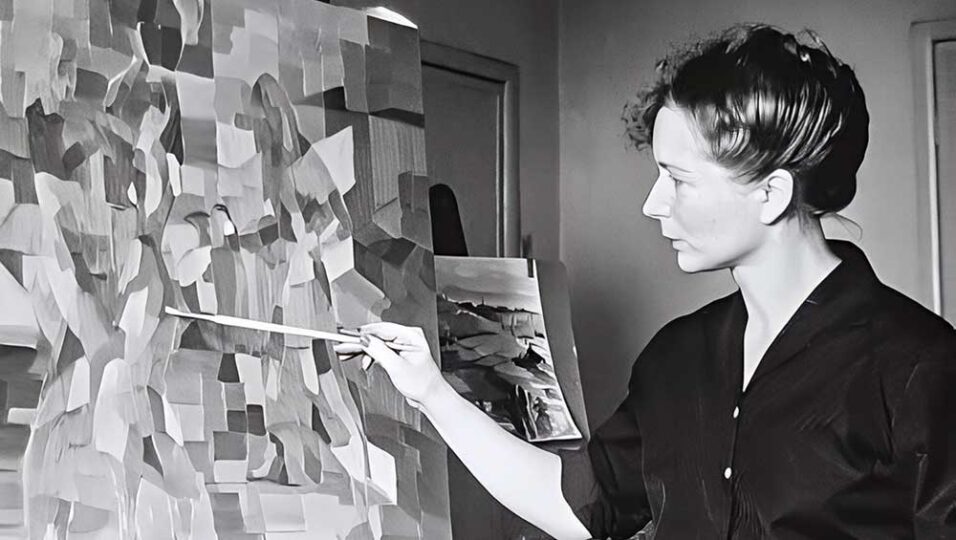19/02/25
Hélène de Beauvoir: The Woman Destroyed
Amar Gallery, London
23 January – 30 March 2025
As an only child, I have never known the misery of being a second child destined to only ever be second best. This was something Hélène de Beauvoir (1910-2001) lived with from the day she was born. Two years younger than her sister, Simone, she failed her aristocratic parents at conception by not being a boy. With blond plaits and light blue eyes, she was nicknamed “Poupette” (“little doll”), and, from an early age, she could be found with her pencils, drawing and copying illustrations from books. Her gestures were sure and quick, even as a child. Nonetheless, her father, Georges de Beauvoir, was interested only in the academic success of his elder daughter. Furthermore, he considered Simone’s character to demand exceptional treatment, stating: “Oh, you shouldn’t interfere with Simone or she’s going to have a fit.” Hélène, on the other hand, was not spared. While she bore it well, she often sought refuge in her sister’s arms. Despite the unfair treatment, they were incredibly close. Together they played a game, whereby Simone would write stories that she would read out loud, one chapter at a time, and Hélène would make fitting illustrations. As they grew older, they became one another’s best friends. Simone recalls in her memoirs: “My sister joined me several times on these evenings out; in order to give herself a ‘low-class’ appearance she would wear her hat on one side and pull her skirts up over her crossed knees. We would talk loudly and laugh at the tops of our voices. Or we would enter a bar separately, pretending not to know one another and then we would start to fight: we would tear each other’s hair, scream insults at one another, and feel very gratified if such an exhibition diverted the public for a few minutes.”

In her career as an artist – one at least in part selected so as to be something quite different from the chosen path of her sister – Hélène was supported by Simone in much the same way as Vincent van Gogh was by his brother, Theo. The elder sister paid for her sibling’s materials, her studio, her exhibitions, and the transport of herself and her works when necessary. Over more than six decades, Hélène made in excess of 3,000 paintings and works on paper, and she had many exhibitions, including in America. This, however, is her first one in London. Amar Singh, the director of Amar Gallery, where it is being held, and who says: “Our whole mission is to search for overlooked artists,” spent three years putting the show together, sourcing works from around the world, meeting patrons of De Beauvoir and discovering her importance to her sister and the global feminist movement. The artist published her memoirs in 1987; had a book devoted to her painting published in 1991; was the subject, in 2004, along with Simone, of a memoir by their friend, the women’s rights specialist Claudine Monteil; and had a monograph published in German in 2014.
So why has no one heard of Hélène de Beauvoir?
Read my full review here